- Revenue Cycle Management
- COVID-19
- Reimbursement
- Diabetes Awareness Month
- Risk Management
- Patient Retention
- Staffing
- Medical Economics® 100th Anniversary
- Coding and documentation
- Business of Endocrinology
- Telehealth
- Physicians Financial News
- Cybersecurity
- Cardiovascular Clinical Consult
- Locum Tenens, brought to you by LocumLife®
- Weight Management
- Business of Women's Health
- Practice Efficiency
- Finance and Wealth
- EHRs
- Remote Patient Monitoring
- Sponsored Webinars
- Medical Technology
- Billing and collections
- Acute Pain Management
- Exclusive Content
- Value-based Care
- Business of Pediatrics
- Concierge Medicine 2.0 by Castle Connolly Private Health Partners
- Practice Growth
- Concierge Medicine
- Business of Cardiology
- Implementing the Topcon Ocular Telehealth Platform
- Malpractice
- Influenza
- Sexual Health
- Chronic Conditions
- Technology
- Legal and Policy
- Money
- Opinion
- Vaccines
- Practice Management
- Patient Relations
- Careers
Should American Tourists Make Their Own Exit from Europe? Part 7
Poland and Austria are the next stops as Eric Anderson zooms us across the world's most densely populated continent.
This is part 7 of a multi-part trip through Europe. Part 6 can be found here.
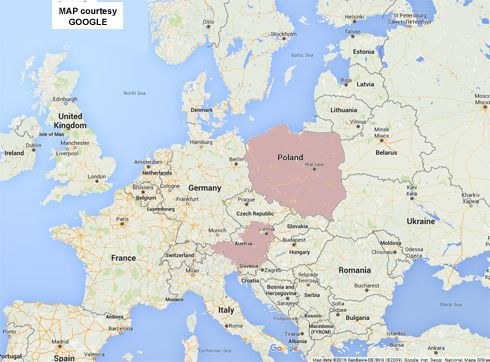
Austria and Poland lie in the eastern part of central Europe, separated only by what is now the Czech Republic. History has treated these two countries differently. Austria, once part of the all-powerful, long-lived and perhaps long-hated Austria-Hungary Empire, made its enemies tremble for 50 years until its influence collapsed in 1918 after World War I. Poland, once a partial part of this Habsburg Empire, never itself made anyone tremble. It was a parcel of contented Catholic farmers spread across a great flat Polish plain, a level land almost indefensible because of its topography, a land where prominent Catholics had encouraged and welcomed the Jewish community to come live in its midst.
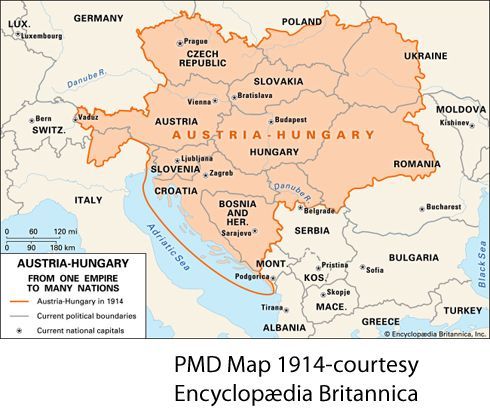
Today’s visitors will see something of the impact World War II made on these two countries. Austria, professed its innocence in the Nazi take-over, despite arguments made that “Austrian Nazis took over the country from below.” It was still claimed even as Kurt Waldheim, the fourth Secretary-General of the UN from 1972-1981 and the ninth president of Austria from 1986-1992, was revealed as a former Nazi.
Poland’s behavior in World War II was quite different. There was nothing hidden about its behavior in the war; the world press wrote about how Poland, a hopelessly outmatched country, confronted the Nazi cavalry panzer attacks by charging the German tanks, mounted on horseback!
But why should this matter to Americans on vacation? If the different nations now forgive each other, why should tourists care? Why is this part of a travel story? Maybe because Faulkner was prescient when he wrote “The past isn’t dead, It isn’t even past.”
Austria
Wolfgang Puck once said he grew up so poor in Austria that he never took a vacation with his family, but Austria now seems rich and important, even majestic. The statues that demonstrate its history and rear up on its streets are so immense that they are almost overwhelming.
(Photography by the author)
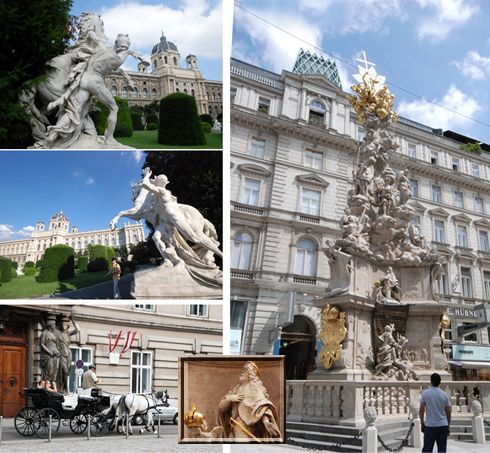
The right image statue and the insert are of Vienna’s 69 foot-tall Plague Column, the Pestsäule. A plague in 1679 decimated the city. The Habsburg emperor at the time, Leopold I, put up a wooden Holy Trinity column to ward off whatever was causing this Black Death. He promised the citizens, who themselves had no ability to leave the infected place, he would put up a more permanent display later. Then he fled the city. The column had a brief problem before it was finished in 1693 when its designer, Mattias Rauchmiller, died of the plague himself in 1686. When the plague was over, Leopold returned to Vienna and modestly took credit that his piety ended the plague as you see in the insert. By the way, Leopold is easily identified at the base of the column (insert): he shows the protruding lower lip, the mandibular prognathism, that evidently was a facial feature common to the Habsburg dynasty.
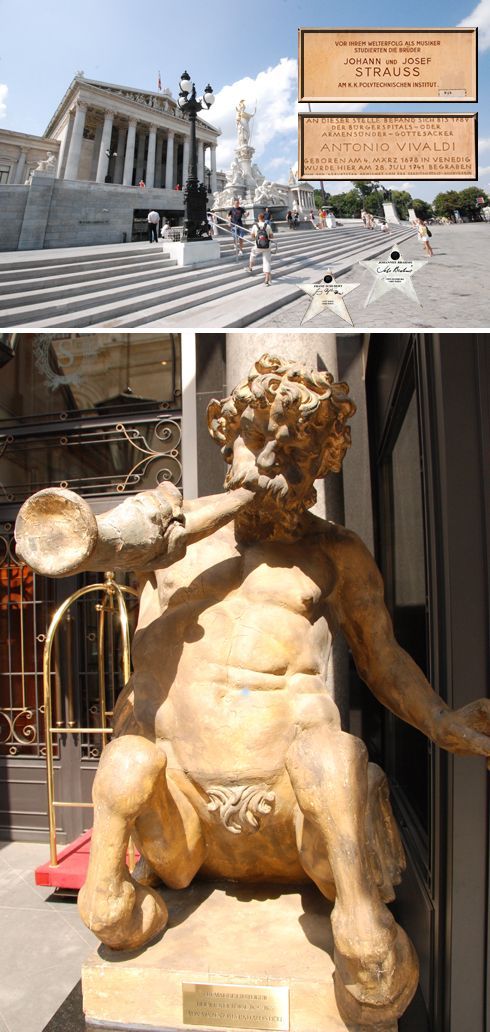
The Plague Column is right there on the main street; you can’t miss it. A brief search reveals more of Vienna’s musical contributions. Plaques on walls remind us of Strauss and Vivaldi and stars in the floor at the State Opera testify among others that Schubert came here in 1797 and 1828 and Brahms in 1897. (For Tina Büttner’s City Walk to experience its musicians, click here.) You will find a musician statue outside the entrance to the celebrated Hotel Sacher and you may recall the famous Sacher-Torte that originated in 1832. Tourists often compare the dessert produced at the Vienna Demel bakery with the original from Hotel Sacher but agree both are delicious (see next image).
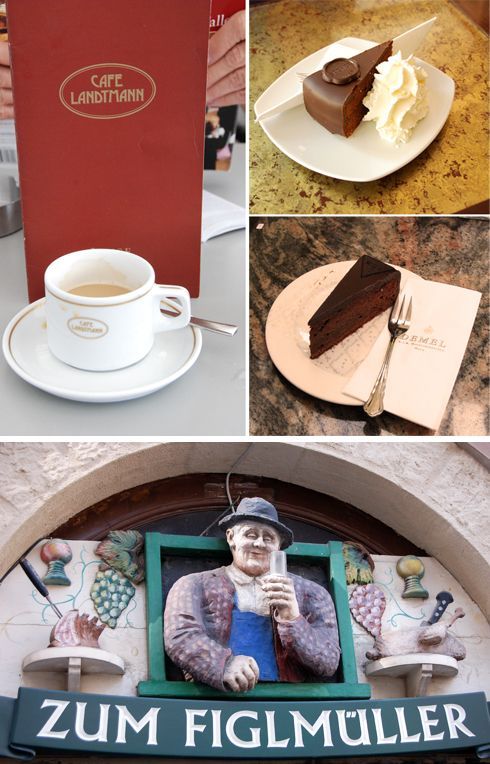
There are no shortage of places to dine in Vienna and there are many cafes ranging from the Café Landtmann where Freud had his favorite table to the two cafés that competed in the “chocolate cake wars,” Demel and Hotel Sacher. We thought the original (top right) at Hotel Sacher was better.
But a further point might be: the central part of Vienna, full of tourists, has become very expensive. And the last time we visited Vienna we found, to our dismay, that the tourist center had incorporated the French style of charging le couvert, the space at the table that you have invited as soon as you sit down. Butter on the table was additionally $6, bread a similar charge and what, in the USA, would be considered part of the wait service is given an extra charge also. If you take care to avoid using, say, butter and bread and decline the charges, the waiter will explain the manager has left for the day charging the waiter’s account for what you have ordered. If you decline the add-ons, you will be stiffing the waiter.
Yet, if you are on vacation and have paid for and endured an expensive flight, why fuss about minor charges, trivialities that should not disturb a vacation? Understood. But Europe is not quite the kind and gentle host to Americans it once was 60 years ago. The majority of Europeans were not alive when the Allied forces liberated their countries. Memories have faded. I believe all Americans are seen now as wealthy, and probably one-time visitors so there’s no need to cultivate them as recurrent customers, especially as Europe has so many other tourists. Yet, I would imagine going now will be better than in 10 years.
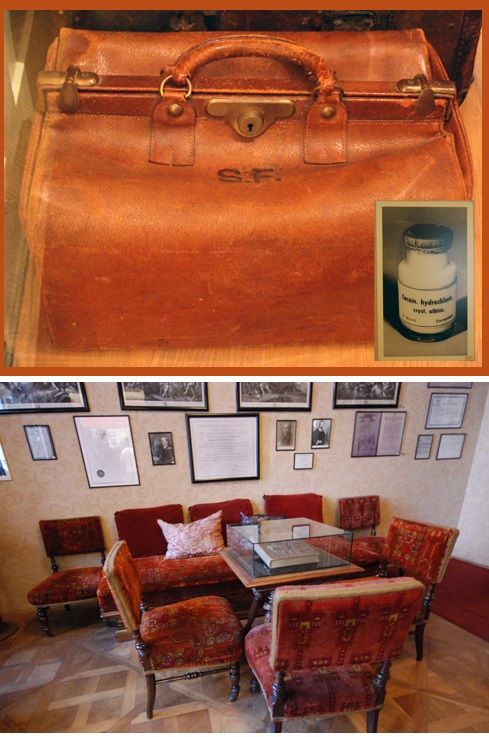
There’s so much to see in Vienna and public transportation is so easy a visit to Sigmund Freud’s consulting rooms at Berggasse 19 1090 is simple. The rooms where he lived and worked 47 years became a popular museum in 1971. It gets about 80,000 visitors a year. The museum will have a new format by 2020 but it still has his doctor’s bag and his waiting room furniture and many of his personal collections. I sat in his office thinking of my mother and wondering if my childhood had been unusual: she never let me down or gave me any life conflicts. There was a big book of New Yorker cartoons on the table. I picked it up. It opened at a page where the patient was saying to his psychiatrist, “Now I feel great! Send the bill to my mother!”
My memories of Vienna include, of course, the opera, where a performance at the end included musicians having fun dressed in informal clothes as if casual Friday, as unexpected an event as finding a book of cartoons in Freud’s rooms. The memories include the sheer majesty of Vienna’s museums built to educate and impress; this is a wealthy city. And the memories include the reward of seeing young persons show by their laid-back actions that they are not overwhelmed by attempts to make them forego the simple life.

Less than 200 miles to the west (about a 2 ½ hour drive) lies a musical city as famous as Vienna, and surrounded by mountains more beautiful, Strasburg. It is of course, the birthplace of Mozart, but when I came here decades after The Sound of Music, I found, to my surprise, there existed a huge challenge to the Mozart memories, namely tours to the places immortalized in the film of the Maria von Trapp family. Mozart’s home is now a museum and open to visitors. Vienna may be impressive; Strasburg is charming.
Poland
Poland, in size, is about halfway between New Mexico and Arizona. The United States is 30 times larger but only 16 percent of the USA is arable land; Poland, in a way a vast farmer’s field, has 35.5 percent of its land in cultivation. It is the largest producer of potatoes, rye and sugar beet in Europe. Though many of its people were farmers it has a sound basis in education and science. Copernicus (1473-1543) dared to tell the Church the Earth revolved about the sun not the other way around and Chopin (1810-184), you might say, put it all to music. Pianist Art Rubinstein, actor Paul Muni, director Billy Wilder, and author Isaac Bashevis Singer were all Polish. Marie Curie (1867-1934) who won the Nobel Prize twice was Polish.
Chopin died of pulmonary tuberculosis aged 39. His museum in Warsaw shows how he dominated the world of music in his short life. The museum has manuscripts of his compositions, re-creations of his apartment in Paris and personal papers showing how he attracted the attention of wealthy women. A tour organized by our Insight Vacations operator in a nearby home allowed us to enjoy a piano recital we would never have discovered on our own.
Torun is one of the oldest cities in Poland. Archaeologists have found a settlement here that dates to 1100 BC. Torum joined the mercantile Hanseatic League in 1280 AD and became an important trade center. Nicolaus Copernicus was born here in 1473 and UNESCO placed it on its World Heritage List as one of 13 in Poland in 1997.Somewhat isolated in north central Poland with a prominent university, it has been called the northern intellectual heart of Poland and the Krakow of the North.
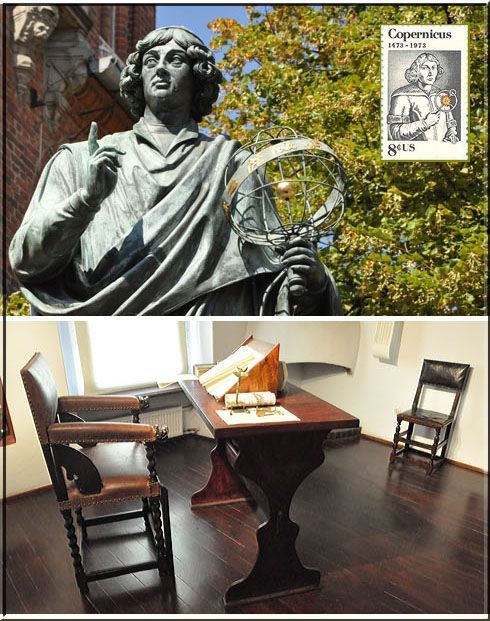
Top image shows the statue of Copernicus. He was born in “Royal Prussia under rule of the Kingdom of Poland” so some regard him as both German and Polish, but writing in Latin, he was “largely indifferent” to nationality. The lower image shows his study in his museum in Torun.
The father of Nicolaus Copernicus lent money to King Casimir IV Jagiellon of Poland to finance the war against the Teutonic Knights. It achieved little, understandable when you see how massive their Malbork castle is. (It’s the largest brick building in Europe and said to be the largest brick castle in the world). The former salt mine at competes with things to see across the width of Poland. Again, the most efficient way to see what attracts you in Poland is by tour operator.
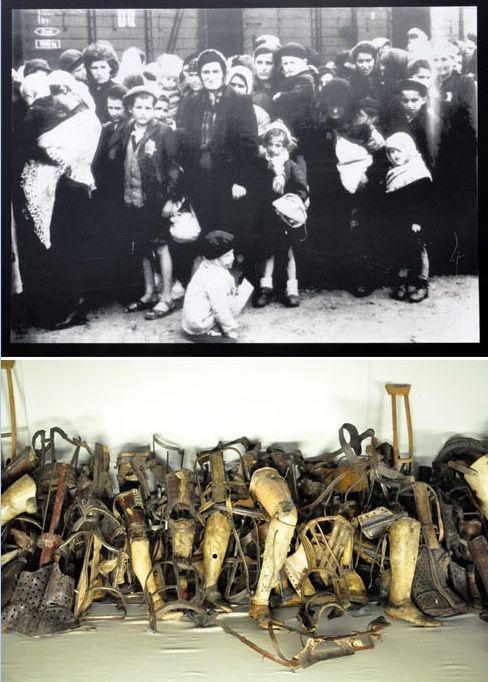
You come to Auschwitz not because you are “attracted”. You come out of duty. The more people see the concentration camps the Nazis built, the more the world will remember.
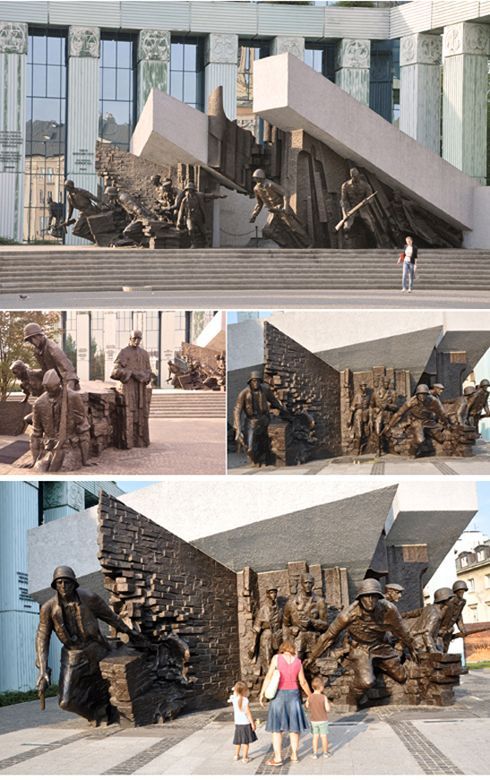
Some of the horror and despair of war can be seen in the heartbreaking memorial in Warsaw to the 1944 Warsaw Uprising. The 1943 Jewish Ghetto Uprising had been handled brutally by the German occupation forces the year before. The loss of life and the destruction of the city of Warsaw in the summer of 1944 by the Germans, nevertheless, was monumental. Orders from the Polish Government in Exile in London brought the poorly equipped Polish Home Army out of the catacombs of the city, assuming the Russian Army, paused on the eastern bank of the Vistula River, would come to assist them. The Russians never came.

After seeing what once had happened to Warsaw, discovering that the old capital of Krakow is essentially undamaged restores one’s soul. The German High Command intended this magnificent city to have a future in German Poland. After all, it was the German headquarters. It is a European treasure house for visitors and more than any place in Poland it is where tourists should come to savor the whole being of Poland: its architecture, its museums, its history, its cuisine, its people.
The Andersons, who live in San Diego, are the resident travel & cruise columnists for Physician's Money Digest. Nancy is a former nursing educator, Eric a retired MD. The one-time president of the NH Academy of Family Physicians, Eric is the only physician in the Society of American Travel Writers. He has also written five books, the last called The Man Who Cried Orange: Stories from a Doctor's Life.
